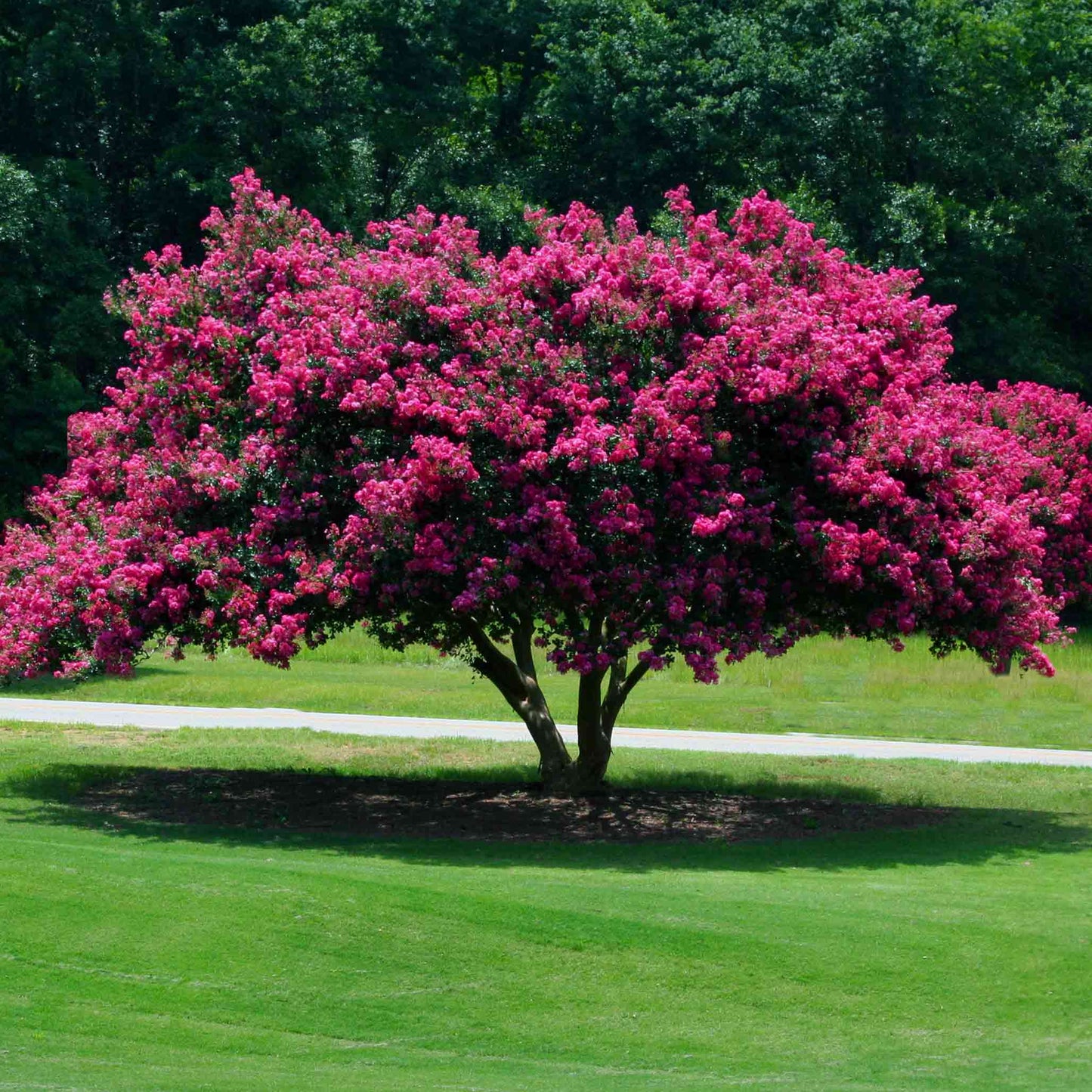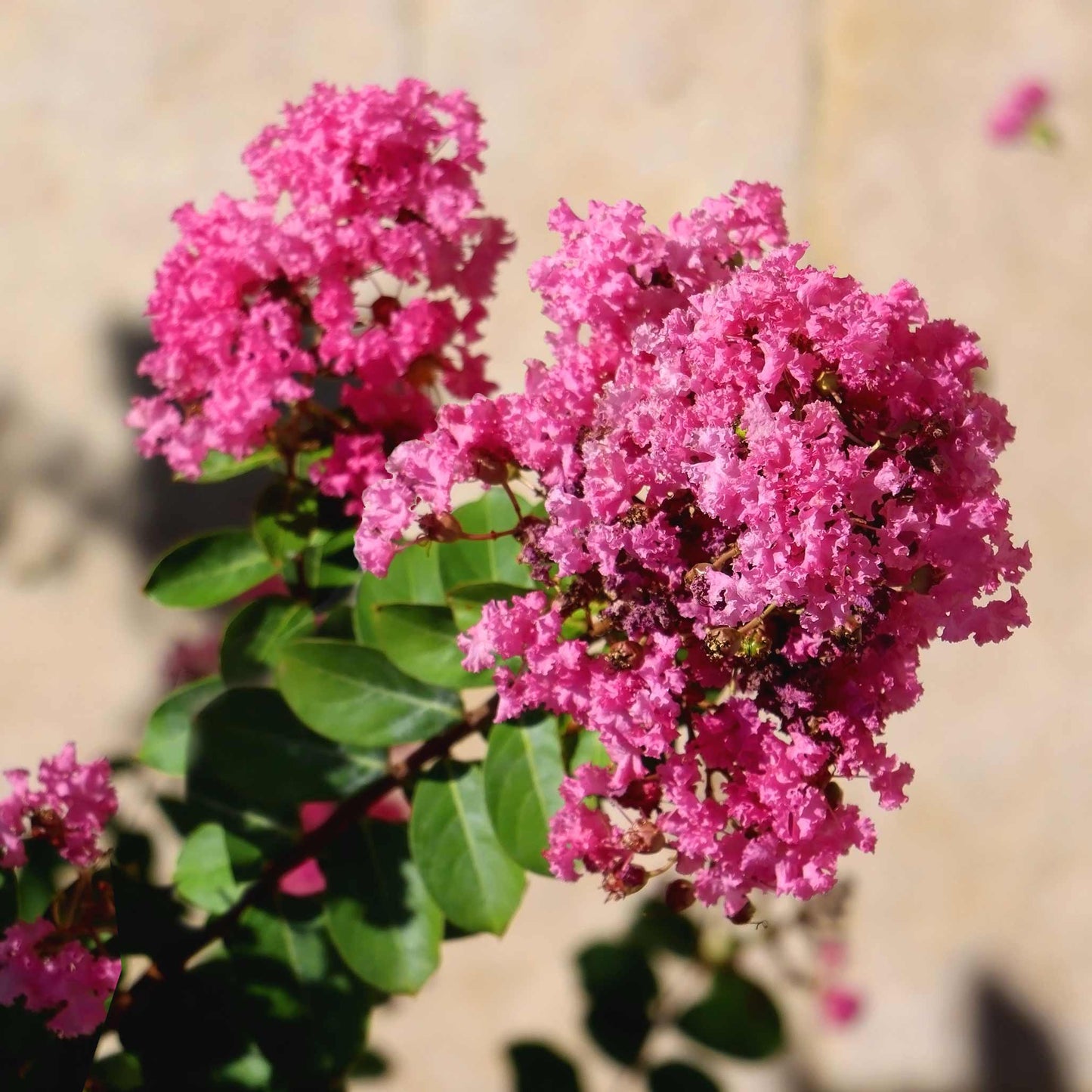Tuscarora Crape Myrtle
Tuscarora Crape Myrtle
SKU:FLO-CRA-TUS-34-3G
Bring a Splash of Color to Your Garden with Tuscarora Crape Myrtle!
Looking for a vibrant addition to your garden that's as tough as it is beautiful? Say hello to the Tuscarora Crape Myrtle! This hardy plant is not just a pretty face; it's a resilient grower that brings a burst of hot pink blooms to your outdoor space.
Why Tuscarora Crape Myrtle?
- Long-Lasting Blooms: From the heat of summer to the chill of fall, this plant keeps the color coming.
- Drought Tolerant: Once established, it laughs in the face of dry spells, making it perfect for the forgetful waterer.
- Low Maintenance: Spend less time fretting over your plants and more time enjoying them. The Tuscarora is famously easy-going.
Planting & Care Tips
Plant your Tuscarora Crape Myrtle in a sunny spot and watch it thrive with minimal fuss. It prefers well-draining soil and can reach up to 15-25 feet tall, so give it room to show off its spectacular display of flowers and peeling bark.
Perfect For...
Whether you're crafting a cozy backyard retreat or looking to add some curb appeal, the Tuscarora's striking presence and easy-care nature make it an ideal choice for gardeners of all stripes.
Don't wait to add this gem to your garden collection. The Tuscarora Crape Myrtle is ready to turn heads and elevate your outdoor space with its lively charm and fuss-free attitude. Get yours today!



Product Details
-
Product Category
Flowering Trees
-
Product Subcategory:
Crape Myrtles
-
Botanical Name:
Lagerstroemia indica 'Tuscarora'
-
Does Not Ship To:
AZ, OR
-
Mature Height:
15-20 ft.
-
Mature Width:
10-20 ft.
-
Growing Zone:
6-9 outdoors
-
Indoor Growing:
-
Sunlight:
Full Sun
-
Growth Rate:
Fast
-
Harvest Time:
-
Bloom Time:
Summer to Fall

Planting Directions
<h2>Planting Tuscarora Crape Myrtle</h2>
<p>To plant a Tuscarora Crape Myrtle, follow these steps:</p>
<ul>
<li>Choose a sunny location with well-draining soil.</li>
<li>Space multiple plants at least 10-15 feet apart to allow for mature growth.</li>
<li>Dig a hole twice as wide and the same depth as the root ball.</li>
<li>Remove the plant from its container and gently loosen the roots.</li>
<li>Place the plant in the hole, ensuring it's at the same depth it was in the container.</li>
<li>Backfill the hole with soil, tamping down gently to remove air pockets.</li>
<li>Water thoroughly to settle the soil around the roots.</li>
<li>Apply a 2-3 inch layer of mulch around the base to retain moisture and regulate soil temperature.</li>
</ul>
<h2>Care and Maintenance</h2>
<p>For ongoing care:</p>
<ul>
<li>Water regularly during the first growing season to establish a deep root system.</li>
<li>After establishment, water during dry spells.</li>
<li>Fertilize in early spring with a balanced, slow-release fertilizer.</li>
<li>Prune in late winter or early spring to remove dead or crossing branches and to shape the plant.</li>
</ul>
<p>For pollination, crape myrtles are self-fertile and do not require additional pollinators. However, attracting bees and butterflies with companion planting can enhance the garden's ecosystem.</p>
<p>Harvesting is not applicable to Tuscarora Crape Myrtle as it is primarily grown for its ornamental value.</p>
<p>Remember, regular observation and timely care are key to a healthy plant. Enjoy your gardening!</p>

FAQs
<h2>FAQs for the Tuscarora Crape Myrtle</h2>
<ol>
<li>
<strong>How do I plant a Tuscarora Crape Myrtle?</strong>
<p>Planting a Tuscarora involves a few key steps to ensure a healthy start:</p>
<ul>
<li>Choose a location with full sun and well-draining soil.</li>
<li>Dig a hole twice as wide and just as deep as the root ball.</li>
<li>Remove the plant from its container and gently loosen the roots.</li>
<li>Place the plant in the hole, ensuring it's level with the surrounding soil.</li>
<li>Backfill the hole with soil, tamping down lightly to remove air pockets.</li>
<li>Water thoroughly to settle the soil around the roots.</li>
<li>Mulch around the base to retain moisture and regulate soil temperature.</li>
</ul>
</li>
<li>
<strong>How often should I water my Tuscarora?</strong>
<p>Watering needs vary based on climate and soil, but here are general guidelines:</p>
<ul>
<li>Water newly planted trees deeply once a week to encourage deep root growth.</li>
<li>Once established, the Tuscarora Crape Myrtle is drought-tolerant but benefits from occasional deep watering during prolonged dry spells.</li>
<li>Avoid over-watering, as this can lead to root rot.</li>
</ul>
</li>
<li>
<strong>What is the best fertilizer for Tuscarora Crape Myrtle?</strong>
<p>To promote healthy growth and flowering, follow these fertilization tips:</p>
<ul>
<li>Use a balanced, slow-release fertilizer in early spring as new growth appears.</li>
<li>Avoid high-nitrogen fertilizers, which can promote leaf growth at the expense of flowers.</li>
<li>Apply according to the product's instructions, avoiding over-fertilization.</li>
</ul>
</li>
<li>
<strong>How do I prune Tuscarora Crape Myrtle?</strong>
<p>Pruning is important for shaping the tree and encouraging blooms:</p>
<ul>
<li>Prune in late winter or early spring before new growth starts.</li>
<li>Remove any dead or crossing branches to improve air circulation.</li>
<li>Thin out the center of the tree to allow sunlight to reach the inner branches.</li>
<li>Shape the tree as desired, but avoid heavy topping, which can harm the tree and reduce flowering.</li>
</ul>
</li>
<li>
<strong>How do I encourage more blooms on my Tuscarora Crape Myrtle?</strong>
<p>To maximize flowering, follow these tips:</p>
<ul>
<li>Ensure the tree is planted in full sun.</li>
<li>Use a phosphorus-rich fertilizer to encourage blooms.</li>
<li>Prune properly to promote healthy growth and flowering.</li>
<li>Water adequately, especially during dry periods, to reduce stress on the tree.</li>
</ul>
</li>
</ol>




